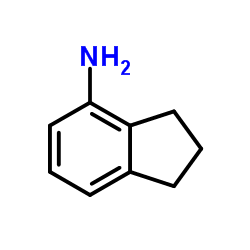Bioorganic & Medicinal Chemistry
2007-07-01
Alkylation potency and protein specificity of aromatic urea derivatives and bioisosteres as potential irreversible antagonists of the colchicine-binding site.
Jessica S Fortin, Jacques Lacroix, Michel Desjardins, Alexandre Patenaude, Eric Petitclerc, René C-Gaudreault
文献索引:Bioorg. Med. Chem. 15 , 4456-69, (2007)
全文:HTML全文
摘要
A number of N-phenyl-N'-(2-chloroethyl)ureas (CEUs) have been shown to be potent antimitotics through their covalent binding to the colchicine-binding site on intracellular beta-tubulin. The present communication aimed to evaluate the role of the electrophilic 2-chloroethyl amino moiety of CEU on cell growth inhibition and the specificity of the drugs as irreversible antagonists of the colchicine-binding site. To that end, several N-phenyl-N'-(2-ethyl)urea (EU), N-phenyl-N'-(2-chloroethyl)urea (CEU), N-aryl amino-2-oxazoline (OXA), and N-phenyl-N'-(2-chloroacetyl)urea (CAU) derivatives were prepared and tested for their antiproliferative activity, their effect on the cell cycle, and their irreversible binding to beta-tubulin. EU derivatives were devoid of antiproliferative activity. CEUs (2h-2i, 2k, 2l, OXA 3e, 3h, 3i, 3k, 3l, tBCEU, and ICEU), OXA (3h, 3i, 3k, 3l, tBOXA, and IOXA), and CAU (4a-4m, tBCAU, and ICAU) had GI(50) between 1.7 and 10microM on three tumor cell lines. Cytotoxic CEU and OXA arrested the cell cycle in G(2)/M phase, while the corresponding CAU were not phase specific. Finally, Western blot analysis clearly showed that only CEUs 2h, 2k, 2l, tBCEU, ICEU and OXA 3h, 3i, 3k, 3l, tBOXA ,and IOXA were able to bind irreversibly to the colchicine-binding site. Our results suggest that increasing the potency of the electrophilic moiety of the aromatic ureas enhances their antiproliferative activity but decreases significantly their capacity to covalently bind to the colchicine-binding site.



